清代团鹤纹石青缎的染料鉴定及色彩分析
2023-09-27李永固金鉴梅高素芸张国伟刘剑赵丰
李永固 金鉴梅 高素芸 张国伟 刘剑 赵丰






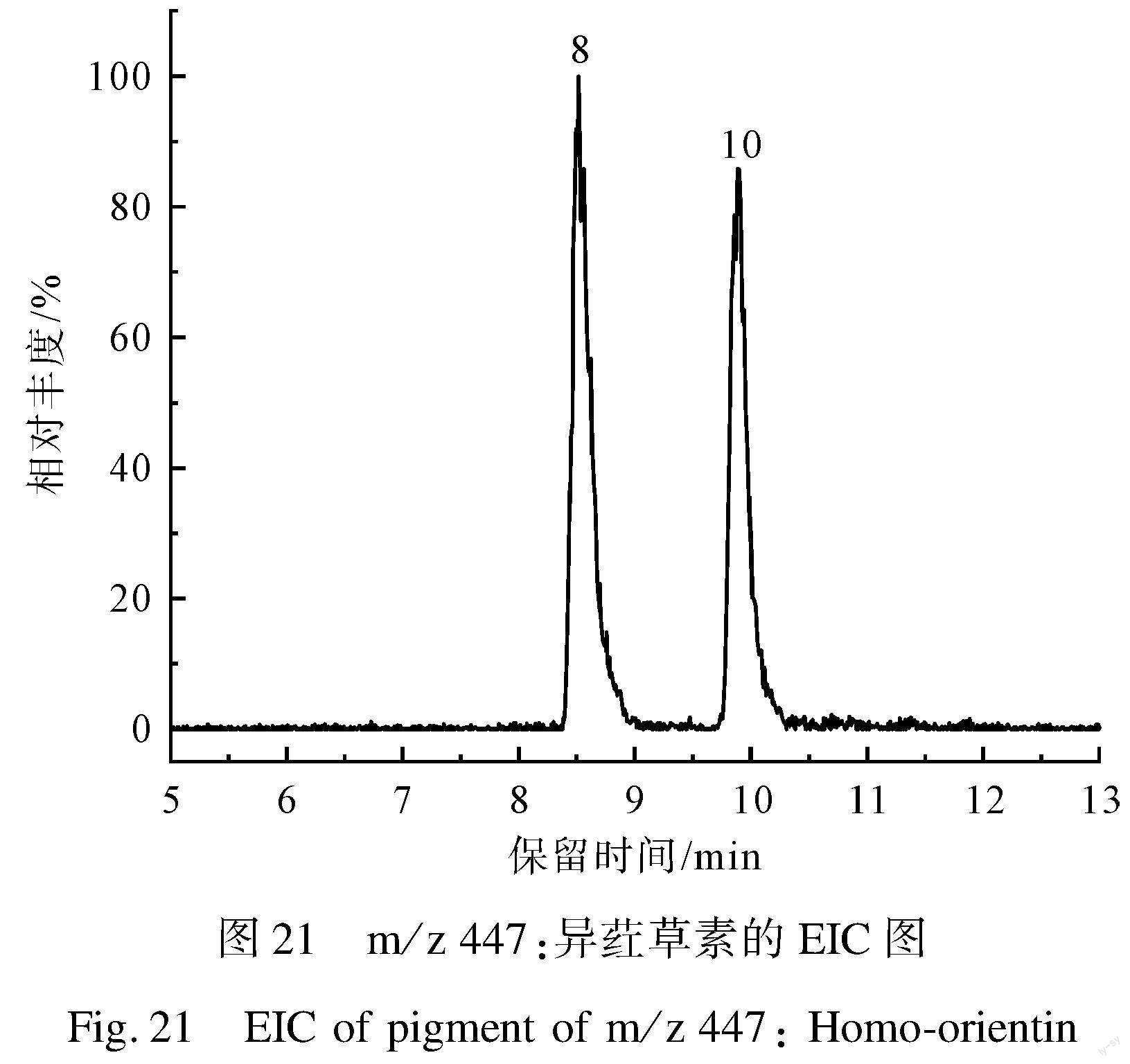


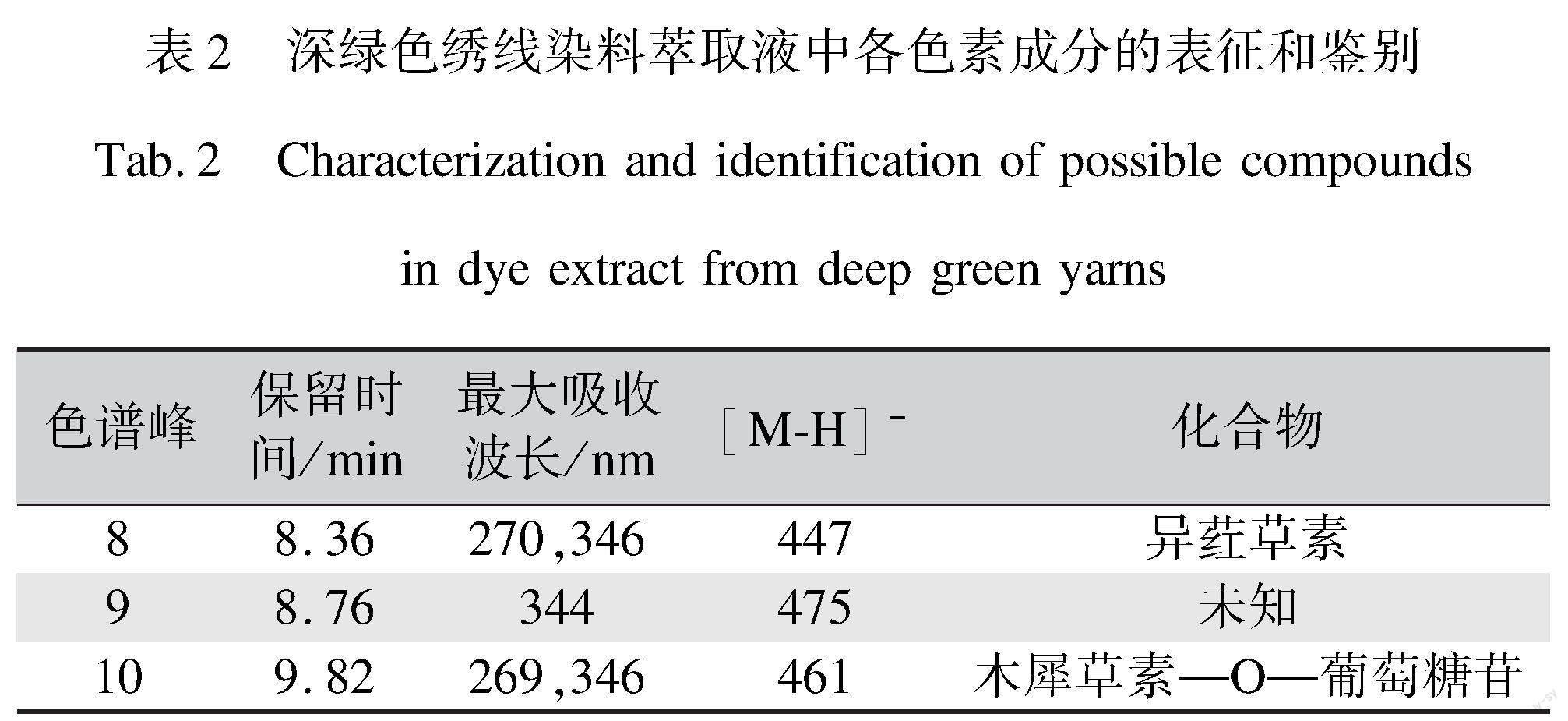
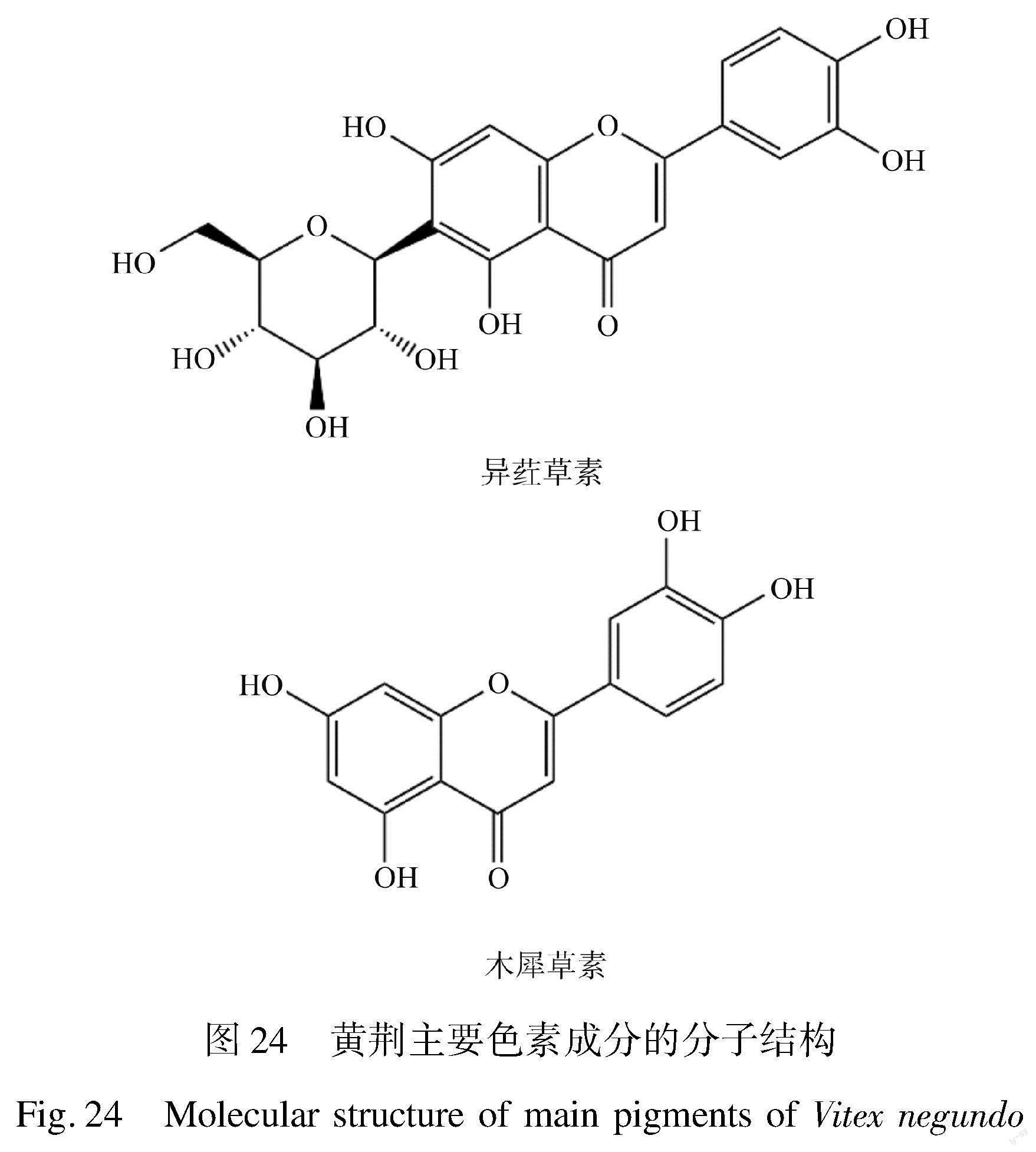





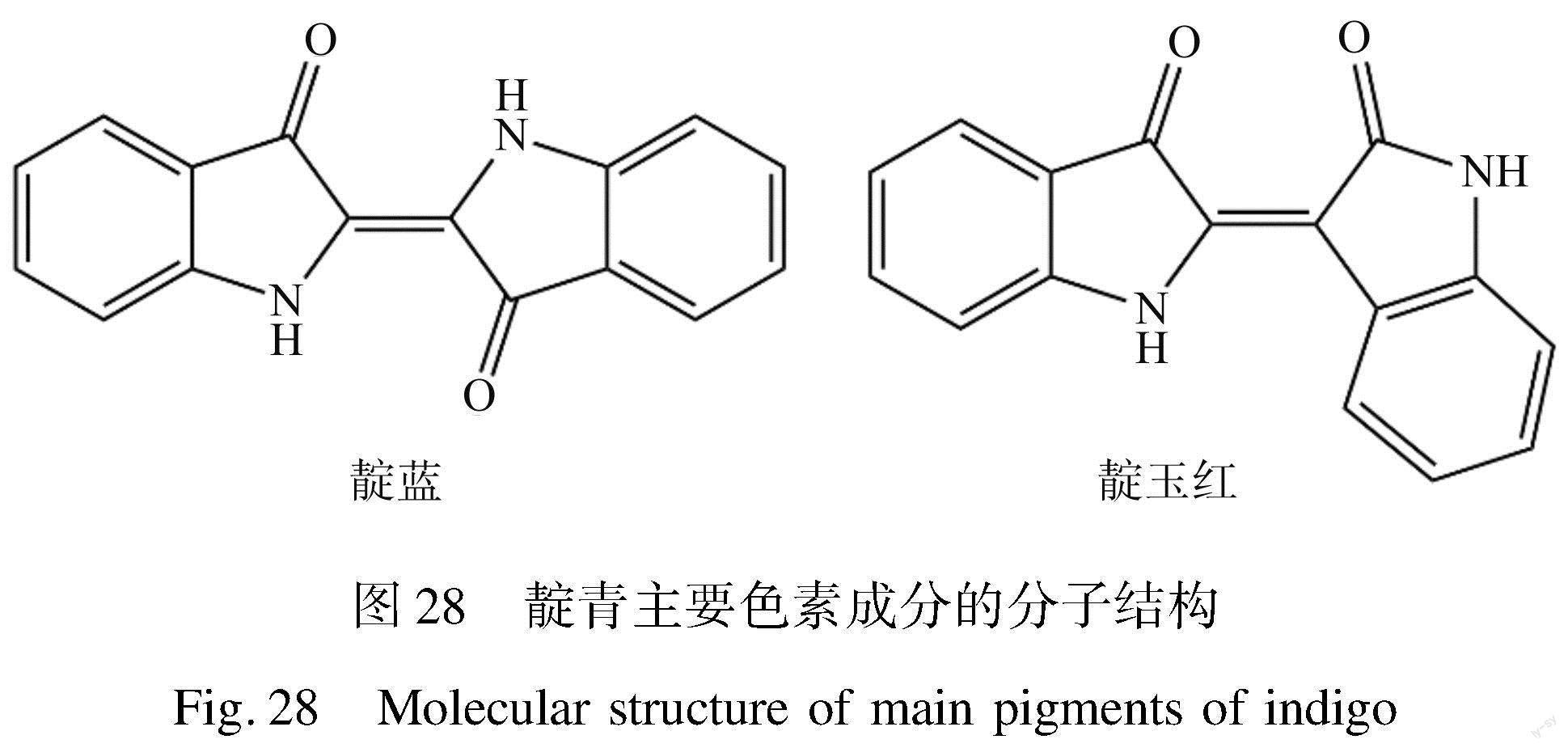

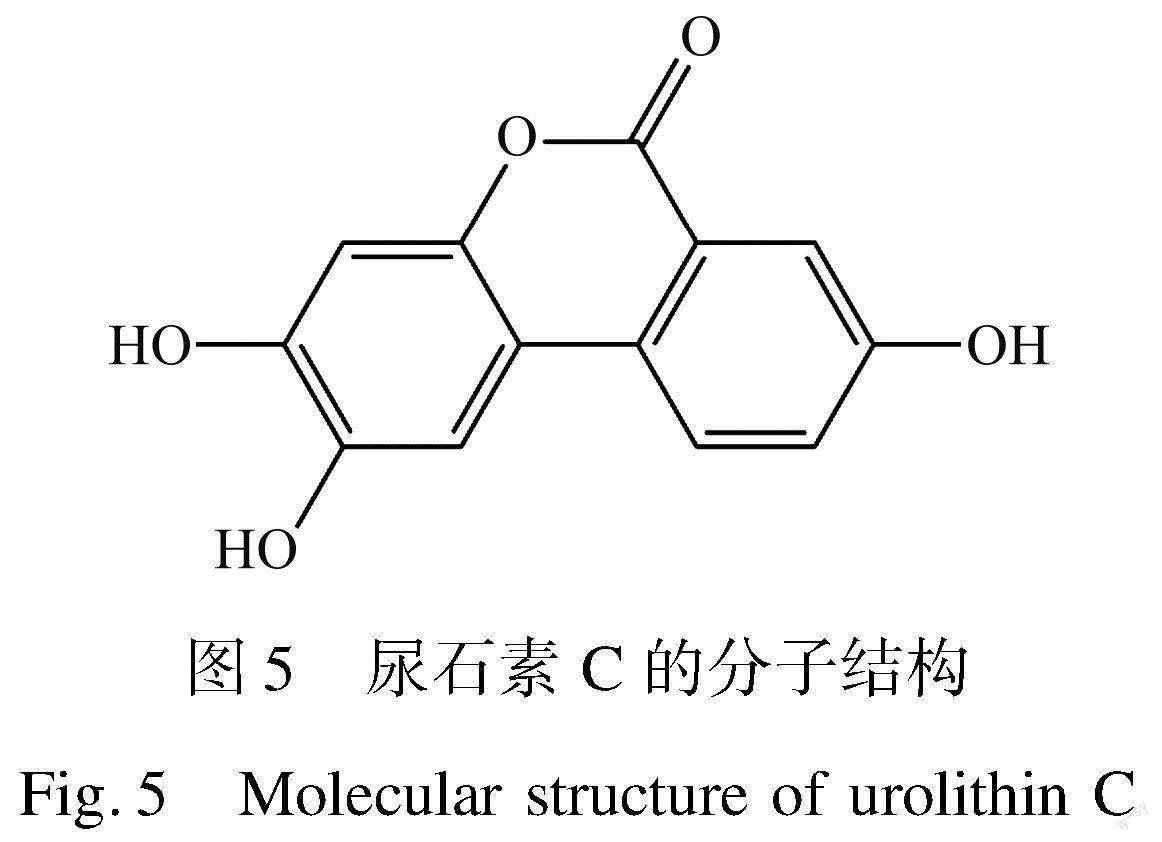
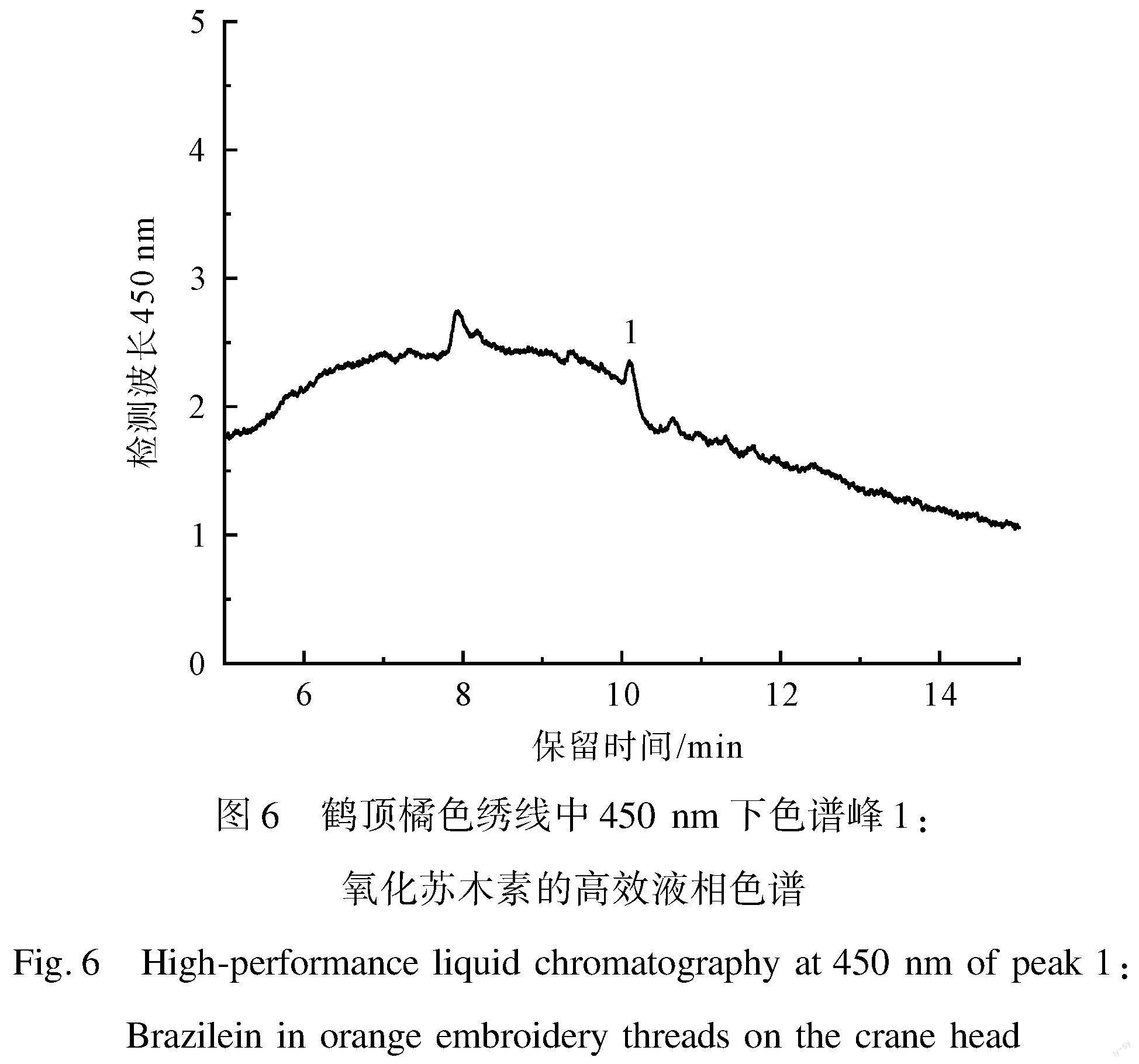

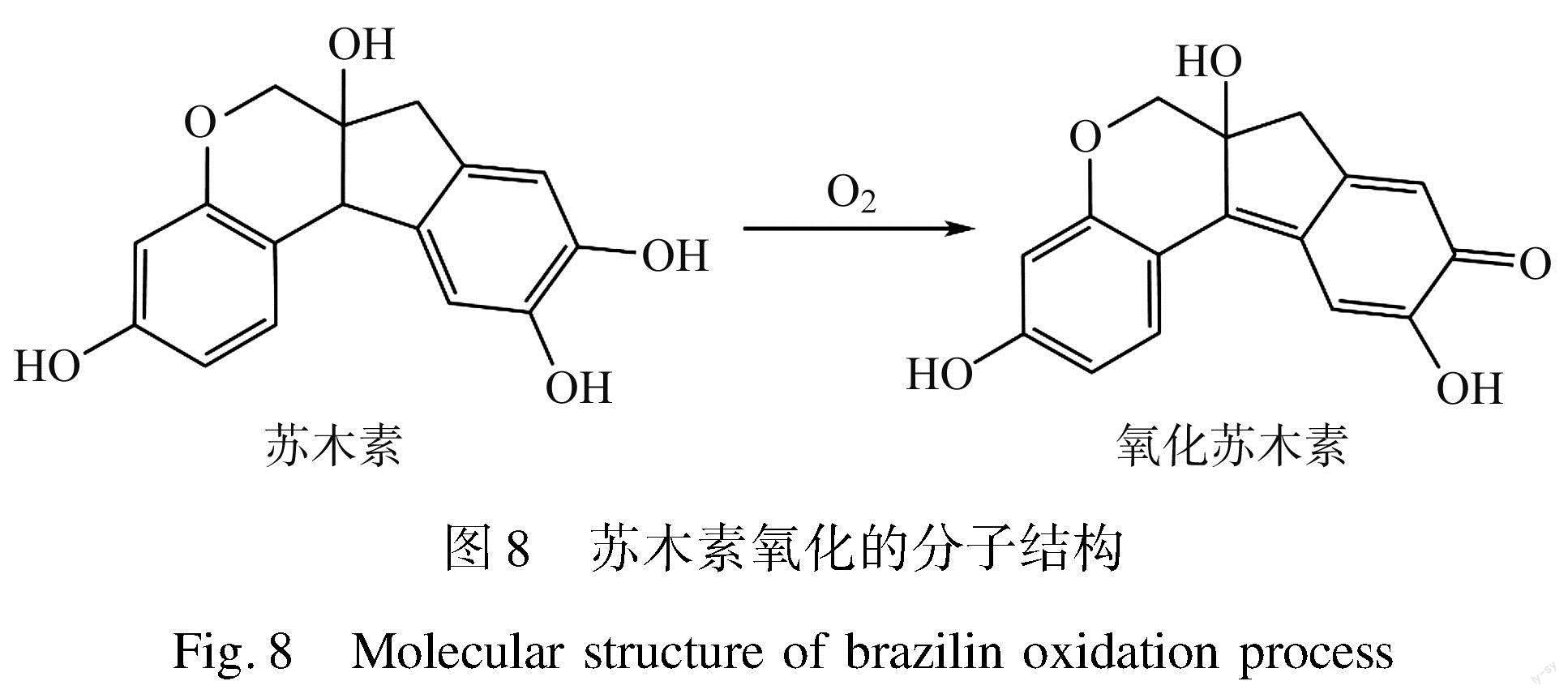






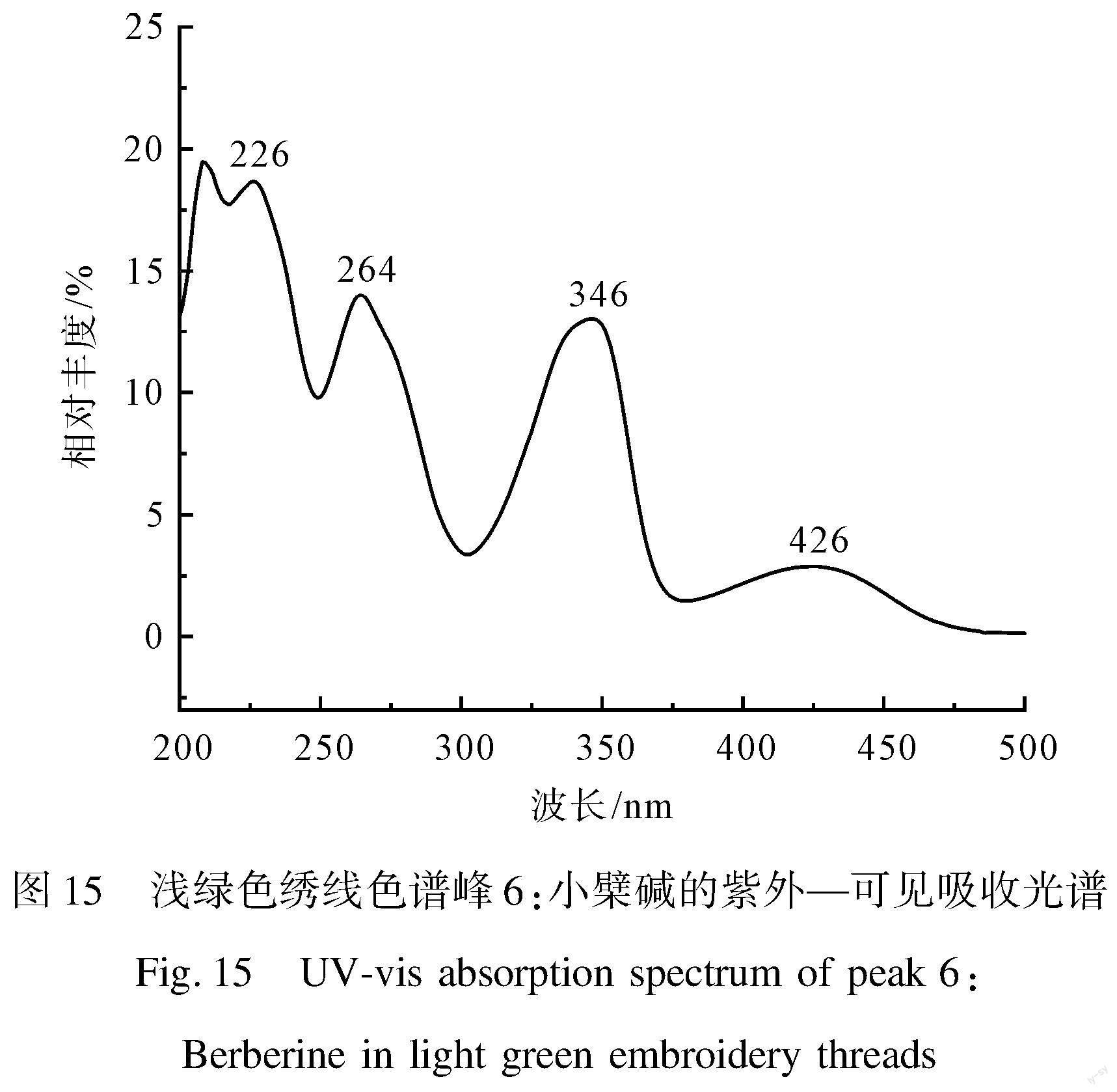

Dye identification and color analysis of azurite satin with a crane roundel pattern in the Qing Dynasty
摘要:纺织品文物是人类历史文化的珍贵遗产,色彩是纺织品文物重要的外在表现,而染料是色彩表现的基本内核。染料考古通过对文物的色彩、染料进行测试,结合古文献记载,可获得染料来源、染色工艺、内在审美、商品流通、文物年代和产地等重要历史信息。本文以中国丝绸博物馆馆藏清代团鹤纹石青缎为例,运用高效液相色谱—质谱联用技术检测丝织品文物上的染料,成功鉴别出红色染料苏木,蓝色染料靛青,黄色染料姜黄、黄檗、黄荆等,并结合相关历史文献对清代纺织品色彩的使用进行了分析。苏木与姜黄套染可得杏黄色,黄檗、黄荆与靛青套染可得绿色。该文物是在清代纺织品中发现使用黄荆染料的首个案例。该文物的鉴别结果为清代丝织品染色研究提供了科学依据,结合色彩分析有助于研究清代时期的经济、文化历史,亦可为清代丝织品色彩复制和文物修复及展示方法提供参考。
关键词:高效液相色谱—质谱联用技术(HPLC-MS);清代石青缎;染料鉴别;染色方法;靛青;黄荆
中图分类号:TS101.913; TQ611 文献标志码:A 文章编号: 10017003(2023)090035
引用页码:091105 DOI: 10.3969/j.issn.1001-7003.2023.09.005(篇序)
在公元19世纪中叶合成染料问世之前,所有纺织品的色彩几乎都来自于天然染料[1]。通过对纺织品文物上的染料品种进行鉴定,可根据特征成分推测染料的确切来源,并作为该时期的经济和文化历史的科学证据[2],有助于文物保护工作者合理保存和展示纺织品文物。目前可用于检测和鉴别天然染料的技术主要有光纤反射光谱(FORS)[3]、三维荧光光谱(3D-FS)[4]、表面增强拉曼光谱(SERS)[5]和高效液相色谱—质谱联用技术(HPLC-MS)等[6]。FORS、3D-FS获取信息量少,且3D-FS无法检测没有荧光特征的染料。SERS不能分离混合染料,部分染料信息可能被湮没。而HPLC-MS能够将染料分离和质谱检测相结合。Zhang等[7]通过使用结合二极管阵列检测器的HPLC-PDA-MS技术分析了来源于新疆博物馆收藏的纺织品碎片,成功鉴别出文物中的木犀草、茜草及靛青等染料;Witkowski等[8]通过HPLC-MS鉴别了公元14—15世纪波兰Gdańsk圣玛丽亚教堂收藏的礼拜法袍中的染料,并根据靛红和靛蓝的比值区分了木蓝和菘蓝;Dyer等[9]通过HPLC-MS在公元前3世纪的文物颜料中鉴别出了紫胶虫和单宁染料,并推测了该文物的染料来源;Calà等[10]通过
HPLC-MS/MS成功鉴别了文物中的地衣染料品种,从而可通过地衣染料的分布判断古代工艺品产地。由此可见,HPLC-MS在染料科技考古领域的地位愈加突出。
中国天然染料的应用技术水平在明清时期发展至顶峰[11],色彩也日趋丰富多样。如图1所示,中国丝绸博物馆馆藏清代团鹤纹石青缎(No.0302)以石青素缎为地,图案以素雅的团鹤纹为主,折枝、如意纹中有黄色、粉色、橘色和绿色等作为点缀,一定程度地代表了清代独特的装饰风格。本文使用HPLC-MS技术对该文物中的染料进行分析和鉴别,并分析清代丝织品的色彩及染色方法。
1 實 验
1.1 化学试剂
HPLC级乙腈和甲醇(德国默克公司),LC-MS级甲酸(美国赛默飞世尔科技公司),HPLC级吡啶(上海安谱实验科技股份有限公司),98%草酸(美国阿克洛斯有机试剂公司)。18.2 MΩ超纯水由Millipore reference纯水仪(法国密理博公司)系统制备,高纯级苏木素、姜黄素(≥90%)、异荭草素(≥98%)、木犀草素(≥98%)、盐酸小檗碱(≥98%)、盐酸巴马汀(≥98%)、靛蓝(>95%)、靛玉红(≥95%)(上海阿拉丁生化科技股份有限公司),苏木、黄檗(水色染坊),靛青(温州采成蓝夹缬博物馆),黄荆、姜黄(中国丝绸博物馆染草园)。
1.2 样品制备
取文物纱线0.1~0.5 mg放入离心管,使用V吡啶︰V水︰V草酸=95︰95︰10混合溶液萃取纱线中的染料,于85 ℃恒温萃取30 min。使用氮气干燥后,将V甲醇︰V水=1︰1混合溶液加入离心管,溶解萃取物,离心,取上清液30 μL至进样瓶,进样。
1.3 仪器设备
本实验采用HPLC-MS法分析清代丝织品上的染料。其中液相色谱系统由二元高压梯度泵、二极管阵列检测器和自动进样器组成LC20AD(日本岛津公司),质谱检测器为线性离子阱质谱仪LTQ-XL(美国赛默飞世尔科技公司),采用C18反相色谱柱Luna C18(美国菲罗门公司)进行染料色素分离。高效液相色谱洗脱液A为0.1%甲酸水溶液,B为01%甲酸乙腈溶液,流速为0.25 mL/min。质谱数据采集和处理由Xcalibur 2.1软件完成,质荷比范围m/z 100~1 000。质谱参数如下:离子喷雾电压分别为3 kV(正离子模式)和25 kV(负离子模式);毛细管温度350 ℃;氮气用作鞘气和辅气,压力分别为241.32 kPa和103.42 kPa;毛细管电压分别为35 V(正离子模式)和-40 V(负离子模式)。多级谱图MSn采集利用DDA程序进行碰撞诱导解离,相关参数见文献[12]。
2 结果与分析
2.1 红色染料
图2是鹤顶橘色绣线在检测波长350 nm下的高效液相色谱图,在保留时间10.64 min时检测出一个明显的色谱峰2,色谱峰2的紫外—可见光谱如图3所示,最大吸收波长分别为258、307 nm和338 nm。色谱峰2对应的质谱如图4所示,负离子模式下的准分子离子峰[M-H]-m/z 243。色谱峰2的二级质谱的碎片离子主要有m/z 171、215、199和225等,因此该物质为苏木素的降解产物尿石素C[13],分子结构如图5所示。图6是450 nm检测波长下橘色纱线染料样品的高效液相色谱图,该图中未发现苏木素,但存在一个微弱的色谱峰1,对应的质谱如图7所示,负离子模式下的准分子离子峰[M-H]-m/z 283,推测为氧化苏木素。这是因为苏木素在空气中极易被氧化,甚至在制成染料时就已经变成了氧化苏木素[14],苏木素的氧化过程如图8所示。以上两种化合物是苏木的特征成分,因此证明该橘色纱线中存在苏木染料。
苏木,又名苏枋或苏方木,原产于东南亚和中国岭南一带,多以木质芯材煎水作为红色染料,最早见于西晋的《南方草木状》[15]:“苏枋……南人以染绛。”苏木在丝、毛、棉织物上都有较好的上染性能,苏木在明清时期,多作为各种间色如红棕色、紫色及橙色调的套染使用,清乾隆朝织染局染作销算档案中记载,苏木与黄栌、槐子、明矾、黑矾以不同比例搭配可以染酱色和古铜色[15]。安徽省图书馆藏《布经》中记载,苏木与川倍、白矾、青矾等以不同比例搭配可以染棕色、紫檀、铁色、秋色等[16]。相较茜草可以通过与不同媒染剂获得更丰富的色相,相较红花染色工艺流程更加简单,染材也更价廉易得,一直是应用十分广泛的红色染料。
2.2 黄色染料
图9为鹤顶橘色纱线染料萃取液在检测波长450 nm下的高效液相色谱。橘色纱线的染料在450 nm下的高效液相色谱图中存在区别于苏木素和Type C的三个色谱峰,在负离子模式下的准分子离子峰分别为[M-H]- m/z 307、337和367,如图10、图11和图12所示;它们的紫外—可见吸收光谱的最大吸收波长如表1所示。推测三种化合物分别为双去甲氧基姜黄素、去甲氧基姜黄素和姜黄素[17],分子结构如图13所示,因此该橘色纱线中存在姜黄。
姜黄是东南亚、中南半岛和中国南部使用广泛的黄色染料,其主要应用部位为根状茎,富含姜黄素(C21H20O6),可染鲜艳明亮的金黄色,但耐日晒色牢度稍差,因此多和其他黄色染料共同使用,在清代染色中一般也用作套染橙色等间色。《布经》记载了东南地区染匠用姜黄与苏木套染棉布的工艺,色名为杏黄,与本次检测结果相对应[18]。
图14为浅绿色纱线的染料萃取液在检测波长350 nm下的高效液相色谱图,存在一个明显的色谱峰6,其紫外—可见光谱的最大吸收波长分别为226、264、346 nm和426 nm(图15)。另有一个微弱的色谱峰7,其紫外—可见光谱的最大吸收波长为265、346 nm和426 nm(图16)。由图17、图18可见,二者的准分子离子峰[M+H]+分别为m/z 336、352,结合保留时间推测为小檗碱和巴马汀[19],其分子结构如图19所示。此外,根据色谱峰的信号强度可知小檗碱的相对含量多于巴马汀,确定该染料来源于川黄檗[20]。
黄檗,别名黄柏、黄檗木,广泛分布于东北、华中、华东、华南及陕甘宁等地区,中国常用的品种包括川黄檗和关黄檗。黄檗除了可染纺织品之外,还常用于染纸笺,其中富含的小檗碱有防虫之效。其树皮经过煎煮以后,可以直接染丝帛为黄色,明清时期文献记载,染葵黄虽使用了明矾做媒染剂,但媒染前后的色相差别不大,不同配比的黄檗与靛青套染可得豆绿、水绿和砂绿等[16],推测该文物的绿色为三者之一。
如图20所示,深绿色纱线的染料萃取液在350 nm下的色谱图中有3个信号较强的色谱峰,色谱峰8、9、10分别与[M-H]- m/z 447、475和461的EIC图相对应(图21—图23)。三种化合物紫外—可见吸收光谱的最大吸收波长和二级质谱如表2所示,推测色谱峰8和10对应的化合物分别是异荭草素和木犀草素—O—葡萄糖苷,是黄荆的特征色素成分[21],其结构如图24所示。峰9代表一种未知化合物,根据紫外光谱的最大吸收波长推测该成分也是黄酮类化合物。
黄荆主要产自长江以南各省,北達秦岭淮河。非洲东部、马达加斯加、亚洲东南部及南美洲的玻利维亚也有分布。茎叶可做染料,公元6—10世纪的敦煌洞窟纺织品中检测并鉴别出了黄荆,本文也是首次在清代丝织品中检测到黄荆的案例。《大元毡罽工物记》中有记载荆叶可用来做毛毡染色[22]。明代的《多能鄙事》《居家必用事类全集》中有记载将荆叶与白矾、皂矾一起染“荆褐”[23],但在清代鲜有文献记载。
2.3 蓝色染料
图25为蓝色、浅绿色和深绿色三种纱线在检测波长600 nm下的高效液相色谱,三者具有相同的保留时间,说明三个色谱峰代表的物质相同。图26为色谱峰11的紫外—可见吸收光谱,该物质的最大吸收波长为290、362 nm和546 nm。由于靛蓝和靛玉红互为同分异构,二者的质谱数据相同,其质谱如图27所示,因此仅通过质谱图无法对二者区分,可根据紫外—可见光谱的最大吸收波长推测色谱峰11、12和13表示的化合物均为靛玉红[19],靛玉红与靛蓝的分子结构如
图28所示,说明该文物纱线中均存在蓝色染料靛青。但在该样品中并未检测到靛蓝,分析认为是因为文物取样量较少,且靛蓝难溶于甲醇的水溶液,靛蓝未被成功萃取。而靛玉红作为靛青染料的特征成分,也可作为以上样品中存在靛青染料的有力证明。
天然的蓝色染料可称为靛青,主要从含靛植物中获得[24]。中国历史上使用的含靛植物主要有4种,分别为蓼蓝、菘蓝、马蓝和木蓝。早在周朝就有关于蓝草种植的记载,清代时这4种蓝草在国内都有种植[25]。靛青染料上染纤维的主要色素成分只有靛蓝和靛玉红,因此难以准确判断文物中靛青染料的植物来源。
范鲁丹等[19]曾报道清代明黄色团龙纹实地纱盘金绣龙袍中包括红、金黄、明黄、豆绿、官绿、蓝和天青等色彩,与团鹤纹石青缎的色系相似。在该龙袍中检测出了植物染料苏木、红花、槐米、黄檗、黄栌和靛青,其中黄栌主要多见于华北等高海拔地区,因此推测该龙袍很可能是京内织染局制作;而本文鉴别出的黄荆和姜黄的主要分布地区分别为江南和华南一带,因此推测该件团鹤纹石青缎可能产于江南或华南等地。以上也可证明,染料科技考古能为纺织品文物产地的判断提供一定的科学依据。
3 结 论
清代纺织品色彩丰富,本文以中国丝绸博物馆馆藏团鹤纹石青缎为例,通过HPLC-MS技术,对该文物4种颜色绣线上的染料进行分析和鉴别。该文物中蓝色纱线为蓝色染料靛青染色,橘色纱线为红色染料苏木与黄色染料姜黄套染,浅绿色和深绿色纱线为靛青分别与黄色染料黄檗、黄荆套染。其中黄荆在清代纺织品文物中较为少见,本文也是在清代丝织品文物中首次检测并成功鉴别的案例。染料和染色工艺的研究有利于文物保护工作者对该类珍贵文物进行科学保存、修复与展示。此外,染料品种的鉴别结果也可作为判断文物产地的依据,从而挖掘出文物更多的历史信息。但该文物的深绿色纱线中仍存在某些未知化合物无法准确鉴别,有待于进一步探究。
参考文献:
[1]CARDON D. Natural Dyes-Sources, Tradition, Technology and Science[M]. London: Archetype Publication Ltd., 2007.
[2]HOFENK J. The Colourful Past-Origins, Chemistry and Identification of Natural Dyestuffs[M]. Riggisberg and London: Abegg-Stiftung and Archetype Publication Ltd., 2004: 20.
[3]刘剑, 陈克, 周旸, 等. 微型光纤光谱技术在植物染料鉴别与光照色牢度评估中的应用[J]. 纺织学报, 2014, 35(6): 85-88.
LIU Jian, CHEN Ke, ZHOU Yang, et al. Identification and light-fastness evaluation of vegetable dyes usingminiature spectrometer with fiber optics[J]. Journal of Textile Research, 2014, 35(6): 85-88.
[4]NAKAMURA R, TANAKA Y, OGATA A, et al. Dye analysis of Shosoin textiles using excitation-emission matrix fluorescence and ultraviolet-visible reflectance spectroscopic techniques[J]. Analytical Chemistry, 2009, 81(14): 5691-5698.
[5]ZHU J, LIU J, FAN Y, et al. SERS detection of anthraquinone dyes: Using solvothermal silver colloid as the substrate[J]. Spectrochimica Acta Part A: Molecular and Biomolecular Spectroscopy, 2022, 282: 121646.
[6]DEGANO I, RIBECHINI E, MODUGNO F, et al. Analytical methods for the characterization of organic dyes in artworks and in historical textiles[J]. Applied Spectroscopy Reviews, 2009, 44(5): 363-410.
[7]ZHANG X, GOOD I, LAURSEN R. Characterization of dyestuffs in ancient textiles from Xinjiang[J]. Journal of Archaeological Science, 2008, 35(4): 1095-1103.
[8]WITKOWSKI B, GANECZKO M, HRYSZKO H, et al. Identification of orcein and selected natural dyes in 14th and 15th century liturgical paraments with high-performance liquid chromatography coupled to the electrospray ionization tandem mass spectrometry (HPLC-ESI/MS/MS)[J]. Microchemical Journal, 2017, 133: 370-379.
[9]DYER J, TAMBURINI D, SOTIROPOULOU S. The identification of lac as a pigment in ancient Greek polychromy: The case of a Hellenistic oinochoe from Canosa di Puglia[J]. Dyes and Pigments, 2018, 149: 122-132.
[10]CAL E, BENZI M, GOSETTI F, et al. Towards the identification of the lichen species in historical orchil dyes by HPLC-MS/MS[J]. Microchemical Journal, 2019, 150: 104140.
[11]王業宏. 清代前期龙袍研究(1616—1766)[D]. 上海: 东华大学, 2010.
WANG Yehong. A Study on Dragon Robe in Earlier Half Qing Dynasty (1616-1766)[D]. Shanghai: Donghua University, 2010.
[12]LIU J, ZHOU Y, ZHAO F, et al. Identification ofearly synthetic dyes in historical Chinese textiles of latenineteenth century by high-performance liquidchromatography coupled with diode array detection and massspectrometry[J]. Coloration Technology, 2016, 132(2): 177-185.
[13]MANHITA A, FERREIRA T, CANDEIAS A, et al. Extracting natural dyes from wool: An evaluation of extraction methods[J]. Analytical and Bioanalytical Chemistry, 2011, 400(5): 1501-1514.
[14]FERREIRA E S B, HULME A N, MCNAB H, et al. The natural constituents of historical textile dyes[J]. Chemical Society Reviews, 2004, 33(6): 329-336.
[15]嵇含. 南方草木状[M]. 广州: 广东科技出版社, 2009.
JI Han. Nan-fang Ts’ao-mu Chuang: A Fourth Century Flora of Southeast Asia[M]. Guangzhou: Guangdong Science and Technology Press, 2009.
[16]刘剑, 王业宏. 乾隆色谱: 17—19世纪纺织品染料研究与色彩复原[M]. 杭州: 浙江大学出版社, 2020: 103.
LIU Jian, WANG Yehong. The Qianlong Palette: The Research on Dyes in the 17th-19th Century Textiles and Reconstitution of the Qing Dynasty Colors[M]. Hangzhou: Zhejiang University Press, 2020: 103.
[17]TAMBURINI D. Investigating Asian colourants in Chinese textiles from Dunhuang (7th-10th century AD) by high performance liquid chromatography tandem mass spectrometry: Towards the creation of a mass spectra database[J]. Dyes and Pigments, 2019, 163: 454-474.
[18]李斌. 清代染织专著《布经》考[J]. 东南文化, 1991(1): 79-86.
LI Bin. A textual research of textile monograph Book of Cloth in the Qing Dynasty[J]. Southeast Culture, 1991(1): 79-86.
[19]范鲁丹, 郭丹华, 刘剑, 等. 高效液相色谱—质谱联用技术鉴别清代小龙袍染料[J]. 丝绸, 2019, 56(2): 50-55.
FAN Ludan, GUO Danhua, LIU Jian, et al. Identification of dyes of small dragon robe in the Qing Dynasty with high performance liquid chromatography-mass spectrometry[J]. Journal of Silk, 2019, 56(2): 50-55.
[20]ZHANG X, MOURI C, MIKAGE M, et al. Preliminary studies toward identification of sources of protoberberine alkaloids used as yellow dyes in Asian objects of historical interest[J]. Studies in Conservation, 2010, 55(3): 177-185.
[21]LIU J, LI W, KANG X, et al. Profiling by HPLC-DAD-MSD reveals a 2500-year history of the use of natural dyes in Northwest China[J]. Dyes and Pigments, 2021(187): 109143.
[22]趙翰生. 《大元毡罽工物记》所载毛纺织史料述[J]. 自然科学史研究, 2013, 32(2): 227-238.
ZHAO Hansheng. An analysis put down natural production record of felts and carpets in Yuan Dynasty Great Encyclopedia of the Yongle Reign[J]. Studies in the History of Natural Sciences, 2013, 32(2): 227-238.
[23]刘基. 多能鄙事[M]. 上海: 上海古籍出版社, 1996: 56.
LIU Ji. Capable of Doing All Sorts of Vulgar Things[M]. Shanghai: Shanghai Classics Publishing House, 1996: 56.
[24]刘剑, 王业宏, 郭丹华. 传统靛青染料的生产工艺[J]. 丝绸, 2009(11): 42-43.
LIU Jian, WANG Yehong, GUO Danhua. The processing technique of traditional indigo dyes[J]. Journal of Silk, 2009(11): 42-43.
[25]趙翰生, 李劲松. 蓝染植物文献的另类解读[J]. 服饰导刊, 2020, 9(1): 17-25.
ZHAO Hansheng, LI Jinsong. An alternative interpretation of documents on blue-dyeing plants[J]. Fashion Guide, 2020, 9(1): 17-25.
Dye identification and color analysis of azurite satin with a crane roundel pattern in the Qing Dynasty
LI Yonggu1, JIN Jianmei2, GAO Suyun1, ZHANG Guowei3, LIU Jian1,3, ZHAO Feng1,2,3
(1a.College of Textile Science and Engineering; 1b.International Institute of Silk, Zhejiang Sci-Tech University,Hangzhou 310018, China; 2.College of Fashion and Design, Donghua University, Shanghai 200051, China;3.China National Silk Museum, Hangzhou 310002, China)
Abstract:Textile cultural relics are the precious heritage of human history and culture, colors are an important expression of textile cultural relics, and dyes are the basic core of color expression. Dye archaeology is an important branch in the study of textile relics. By testing the colors and dyes of cultural relics and combining with ancient literature records, important historical information such as dye source, dyeing process, internal aesthetics, commodity circulation, age and origin of cultural relics can be obtained. The azurite satin with a crane roundel pattern in the Qing Dynasty is well preserved and rich in color, which to some extent represents the dyeing technology level of the Qing Dynasty, so it is of great value to study the history and culture of this silk cultural relic and the dyeing technology of China in the Qing Dynasty.
To learn about the historical information contained in silk textile cultural relics of the Qing Dynasty and excavate the artistic value, the natural dyes used in the azurite satin with a crane roundel pattern collected in China National Silk Museum were detected by using HPLC-MS technology. The retention time of chromatography, the maximum absorption wavelength of the ultraviolet-visible spectrum, and primary and secondary mass spectrometry of the dye pigments were combined to identify the dye raw materials used in the cultural relics. In addition, the use of textile colors in the Qing Dynasty was analyzed by combining the identification results with relevant historical documents in the Qing Dynasty, such as Book of Cloth and Settlement Archives of Dyeing Workshops of the Ministry of Internal Affairs. The results showed that urolithin C, brazilien, curcumin and its two derivatives were detected in the orange embroidery thread of the azurite satin with a crane roundel pattern of the Qing Dynasty. Berberine, palmatine and indirubin were detected in the light green embroidery thread. Isoorientin, luteolin-O-glucoside, and indirubin were detected in the dark green embroidery thread. Indirubin was detected in the blue embroidery thread. It can be concluded that the orange yarn was dyed with sappanwood and turmeric, consistent with the color and dyes used to dye “apricot yellow” recorded in Book of Cloth; the light green yarn was dyed with barberry and indigo, which was similar to the dyeing process of sand green and bean green recorded in the ancient books of Settlement Archives of Dyeing Workshops of the Ministry of Internal Affairs of the Qing Dynasty and The Exploitation of the Works of Nature of the Ming Dynasty. The dark green yarn was dyed with Vitex negundo and indigo; the blue yarn was dyed with indigo. The above colors and dyes correspond to the records in ancient literature, indicating that the process of dyeing secondary colors with multiple dyes in the Ming and Qing dyes was very mature, and people knew about the use of different dyes to obtain different shades of the same color.
In this research, natural dyes used on the azurite satin with a crane roundel pattern of the Qing Dynasty collected by China National Silk Museum were detected and successfully identified, and this cultural relic is also the first case of Vitex negundo to be identified among Qing Dynasty silk fabric artifacts. Based on the dye records in ancient documents, this research speculates the dyeing process corresponding to the color of the cultural relics, and analyzes other information such as the production area of the cultural relics through the corresponding process characteristics and dye distribution in ancient books. The results can provide reference for the color restoration of the Qing Dynasty silk fabrics, and provide a scientific basis for the research on the dyeing history, the protection and display of the silk cultural relics.
Key words:HPLC-MS; azurite satin with crane roundel pattern of the Qing Dynasty; dye identification; dyeing process; indigo; Vitex negundo
